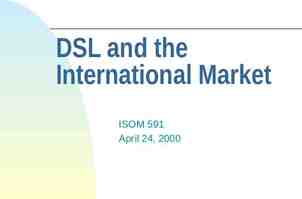Pain Classification: Nociceptive, Neuropathic, Central and Mixed
13 Slides2.49 MB

Pain Classification: Nociceptive, Neuropathic, Central and Mixed Rachael Rzasa Lynn, MD Chronic Pain Zoom Webinar 2 December 2015

Definitions Most basic neurophysiologic classification – based on presumed mechanism of pain. Simplified, there are 2 types of pain: – nociceptive pain – non-nociceptive pain Neuropathic pain Idiopathic pain – psychogenic pain!

Nociceptive Pain Pain due to continuous tissue injury – actual or threatened damage to nonneural tissue results in activation of peripheral nociceptors noxious stimulus electrochemical impulses in peripheral nerves spinal cord brain transduction, transmission, modulation, and perception – Examples: arthritis pain, acute posttraumatic pain – Subdivided into somatic pain and visceral pain Basbaum et al. Cell 2009; 139: 267-

Nociceptive Pain Somatic pain – excitation and/or sensitization of nociceptors in tissues such as bone, periarticular soft tissue, joints, and muscles Well localized Intermittent or constant “aching,” “stabbing,” “gnawing,” “throbbing”

Nociceptive Pain Visceral pain – Not produced by all visceral organs Liver, kidney, most solid viscera, and lung parenchyma are not sensitive to pain. – Not always created by visceral injury – Cutting intestine causes no pain, stretching of the bladder is painful – Diffuse and poorly localized No separate visceral sensory pathway and low proportion of afferent nerve fibers from viscera Intermittent or constant “dull,” “colicky,” “squeezing” – Referrs to other locations. – Accompanied by motor and autonomic reflexes Eg, nausea, vomiting, muscle tension, etc.

Neuropathic Pain “Pain arising as a direct consequence of a lesion or disease affecting the somatosensory system.” – at any point(s) within the somatosensory pathways – Pain from lesion/disease sustained by aberrant processing in the peripheral and/or central nervous system – typically described as “sharp” or “burning” This is a clinical description (NOT a diagnosis) – According to IASP, “this requires a demonstrable lesion or a disease that satisfies established neurological diagnostic criteria.” “The presence of symptoms or signs (e.g., touch-evoked pain) alone does not justify the use of the term neuropathic.” “It is common that diagnostic testing may yield inconclusive or even inconsistent data. In such instances, clinical judgment is required to reduce the totality of findings in a patient into one putative diagnosis or concise group of diagnoses.”

Neuropathic Pain Subsets – Peripherally generated pain: involves such cervical or lumbar radiculopathy, spinal nerve lesions, and brachial or lumbosacral plexopathies – Centrally generated pain: involves injury to the central nervous system at the level of the spinal cord or above. – Sympathetically maintained pain: may be generated peripherally or centrally characterized by localized autonomic dysregulation – vasomotor or sudomotor changes, edema, sweating, trophic changes including atrophy – Complex Regional Pain Syndrome

Central Pain States Central pain: Pain initiated or caused by a primary lesion or dysfunction in the central nervous system. – Can be produced by an type of vascular, demyelinating, infectious, inflammatory, or traumatic lesion in the brain or spinal cord Eg, post-stroke pain Central sensitization: Increase in the excitability of neurons in the spinal cord. – Increased responsiveness of nociceptive neurons in the central nervous system Increased response to input to which they normally respond Activation in response to subthreshold input

IASP Pain Classification Multidimensional Classification of Pain – Developed to standardize descriptions of pain syndromes and provide a point of reference – Uses 5 axes to classify chronic pain Region of the body affected (Axis I), System whose abnormal functioning could produce the pain (Axis II), Temporal characteristics of pain and pattern of occurrence (Axis III), Patient's statement of intensity and time since onset of pain (Axis IV) – Mild, medium or severe, each for 1 month, 1-6 months or 6 months duration Presumed Etiology (Axis V) – Infection, inflammation, neoplasm, toxic, metabolic, etc Uses the above to create 5-digit code assigned to each chronic pain diagnosis Limitations: Does not include psychosocial or behavioral data – ALL PAIN HAS A PSYCHOLOGICAL COMPONENT

Proposed Taxonomy of Pain Based upon Multifactorial Assessment Pain Parameters: – Anatomy/System – Duration/Intensity/Quality – Associated Abnormality (physical/psychological) Underlying Diseases: – Signs/Symptoms Pain Mechanisms: – NEUROPHYSIOLOGICAL Primary afferent involvement CNS involvement – PSYCHOLOGICAL Cognitive-Affective-Behavioral Involvement – – – – Cognitive appraisal of pain Coping Affect/mood Environment

Mixed Pain Most pain is mixed Even “nociceptive pain” can lead to central sensitization – Eg, osteoarthritis fMRI and PET changes – Increased activation in brain areas involved with affect, aversive conditioning and motivation than experimental pain These patients display hyperalgesia locally and in areas distant from the arthritic joint – After THA, these patients display reduced pain in both areas ALL pain has a psychological component! Aranda-Villalobos P et al. Arthritis & Rheumatism 2013; 65: 1262-1270.

REVIEWS b c Dorsal root ganglion Unmyelinated C- bres Lightly myelinated Aδ- bres Heavily myelinated Aβ- bres PFC IC Thalamus Cortex CeA Dorsal Ventral Spinal cord ACC Brain S1 PAG Midbrain LC Pons RVM Medulla Second-order pain projection neurons Spinal sites a Peripheral terminal Noxious stimuli Thermal Mechanical Chemical In ammation Tissue damage Peripheral tissue Ion channels TRPA TRPM TRPV Nav KCNK ASICs First-order neuron Normal, physiological pain TRP: Transient receptor potential channel (many subtypes) TRPA1 cold ( 15 C) in injury (not normal, acute cold), menthol TRPM8 cold( 25 C), menthol TRPV1 heat ( 43 C), capsaicin ASICs: Acid-sensing ion channels KCNK: Potassium channel subtypes Nav: Voltage-gated sodium channel isoforms Also Voltage-gated Calcium channels (N- and T-type); α2δ subunit ’d after injury Mechanical transduction may occur via TRP, ASIC and/or KCNK channels fromthe periphery by nociceptive Figure 1 Physiological pain processing. a Nociceptive signals are transmitted Nature Reviews Immunology Grace PM, et al. Nat Rev Immunol. 2014; 14: 217-231 sensory neurons (first-order primary afferent neurons) the peripheral terminals of which are clustered with ion Basbaum et al. Cell 2009; 139: 267-284

Mechanistic Stratification of Medications Used to Treat Neuropathic Pain Fig. 4. Mechanistic stratification of antineuralgic agents. PNS peripheral nervous system; CBZ carbamazepine; OXC oxcarbazepine; PHT phenytoin; TPM topiramate; LTG lamotrigine; TCA tricyclic antidepressant; NE norepinephrine; SSRI selective serotonin reuptake inhibitor; SNRI serotonin and norepinephrine re-uptake inhibitor; GBP gabapentin; LVT levetiracetam; NMDA N-methyl-D-aspartate; NSAID nonsteroidal anti-inflammatory drug. Beydouna & Backonja M. J Pain Symptom Manage.






